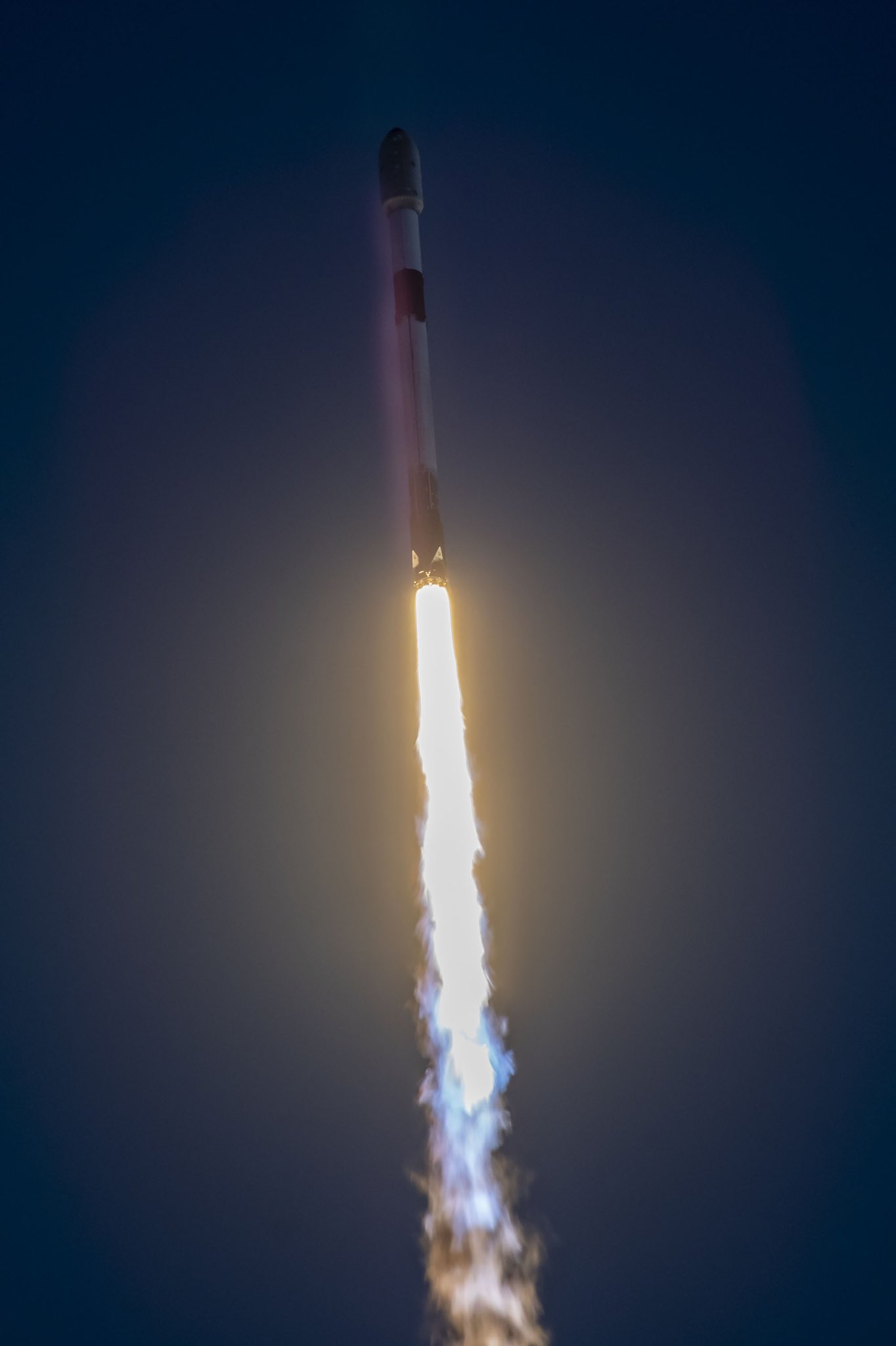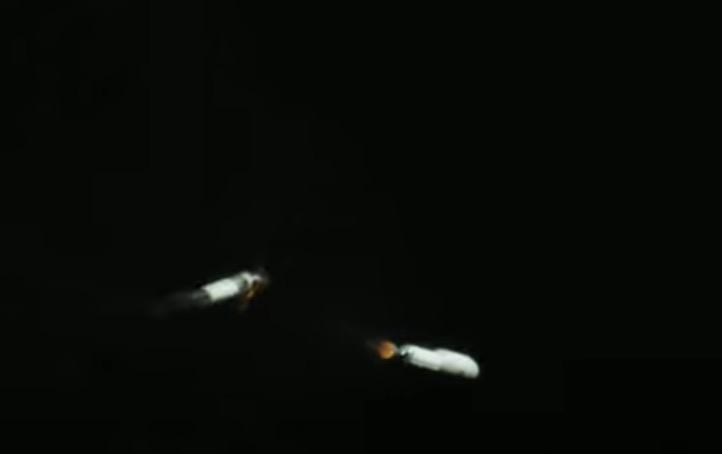
SpaceX's launch of an Italian Earth-observation satellite was worth the wait.
SpaceX originally aimed to launch the Cosmo-SkyMed Second Generation FM2 (CSG-2) satellite on Thursday (Jan. 27), but bad weather forced scrubs on three consecutive days.
Mother Nature cooperated on Sunday (Jan. 30) but a rogue cruise liner didn't, straying into the "no-go zone" downrange of Florida's Cape Canaveral Space Force Station and scuttling that day's attempt as well.
Related: The evolution of SpaceX's rockets in pictures

The Falcon 9 rocket carrying CSG-2 finally got off the ground on Monday (Jan. 31), soaring into the Florida skies in a dazzling sunset liftoff. Those skies appeared to be painted in pastels, with pinkish-purple clouds crisscrossing a deep-blue background that brightened to gold toward the horizon, as gorgeous launch photos snapped by SpaceX show.

Ground-based cameras managed to track the Falcon 9 in sharp detail for a while, even capturing the separation of the rocket's first and second stages about 2.5 minutes after liftoff.

The first stage then made its way back to Earth, eventually pulling off a soft touchdown at Cape Canaveral's Landing Zone-1. Cameras also caught that moment, which marked the 104th booster landing that SpaceX has achieved during an orbital mission.
Get the Space.com Newsletter
Breaking space news, the latest updates on rocket launches, skywatching events and more!

The Falcon 9's upper stage continued making its way to orbit, eventually deploying CSG-2 as planned 60 minutes after liftoff.
CSG-2 will study Earth using synthetic aperture radar (SAR) from a polar-orbiting perch with an altitude of 385 miles (620 kilometers). Its partner, CSG-1, is already doing such work in that orbit; it launched atop an Arianespace Soyuz rocket in December 2019.
The two satellites make up the COSMO-SkyMed Second Generation network, which is a joint effort of the Italian Space Agency, the Italian Ministry of Defense and the Italian Ministry of Education, Universities and Scientific Research.
"COSMO-SkyMed Second Generation['s] purpose is to monitor the Earth for the sake of emergency prevention, strategy, scientific and commercial purposes, providing data on a global scale to support a variety of applications among which risk management, cartography, forest and environment protection, natural resources exploration, land management, defense and security, maritime surveillance, food and agriculture management," European Space Agency officials wrote in a description of the program.
Mike Wall is the author of "Out There" (Grand Central Publishing, 2018; illustrated by Karl Tate), a book about the search for alien life. Follow him on Twitter @michaeldwall. Follow us on Twitter @Spacedotcom or on Facebook.
Join our Space Forums to keep talking space on the latest missions, night sky and more! And if you have a news tip, correction or comment, let us know at: community@space.com.

Michael Wall is a Senior Space Writer with Space.com and joined the team in 2010. He primarily covers exoplanets, spaceflight and military space, but has been known to dabble in the space art beat. His book about the search for alien life, "Out There," was published on Nov. 13, 2018. Before becoming a science writer, Michael worked as a herpetologist and wildlife biologist. He has a Ph.D. in evolutionary biology from the University of Sydney, Australia, a bachelor's degree from the University of Arizona, and a graduate certificate in science writing from the University of California, Santa Cruz. To find out what his latest project is, you can follow Michael on Twitter.









